Japan Travel Plan Recap
Itinerary Overview
- Day 1: Arrival at Haneda - Hotel Mystays Kiyosumi Shirakawa
- Day 2: Tsukiji, Ginza, Shibuya
- Day 3: Tsukiji, Asakusa, Shibuya
- Day 4: Skytree, Ginza
- Day 5: Departure from Narita - South Korea
I focused on revisiting neighborhoods for a food tour experience, taking advantage of Tokyo's efficient subway system, which made traveling between locations quick and easy.
Day 1: Arrival at Haneda - Hotel Mystays Kiyosumi Shirakawa
First day in Tokyo was exhausting; it took two hours to get out of Haneda due to immigration and even longer to buy a Pasmo Train Card. Here are some lessons learned for next time:
- Buy Pasmo online ahead.
- Use a luggage cart.
- Exchange USD for Yen ahead of time stateside.
International travel can be tough, and I wanted to conserve energy by taking it easy, simply heading to the hotel and a nearby restaurant for a meal. By doing the three things mentioned above, you could save 60-90 minutes, avoid long queues in the busy airport, and conserve energy for walking.
Pro-Tip: Expect A LOT of Walking in Japan
Be prepared to walk 15-20k steps per day—that's 2-3x more than typical stateside. I trained for this by doing 8-10k steps a day, which was tough in the US. Bring comfortable, broken-in shoes that can withstand 8-10 miles of walking each day.
Flight into Haneda — Pleasant
The flight in was good. United’s LAX to HND route offers decent economy meals. The Indian Butter Chicken was phenomenal, and the breakfast entrée before landing—eggs & ground beef—was also filling and decent.
The only downside of the Boeing 777 was the limited number of lavatories; I had to wait 20 minutes. Overall, flights are pleasant with free movies, music, and alcohol, but the limited lavatories made me limit my beer consumption.
Train Ride to Kiyosumi Shirakawa Mystays Hotel
The Japanese transit system is excellent, and using the Pasmo card made it very easy to navigate. Google Maps guided me through the 40-minute train ride, requiring a transfer from Keikyu at Daimon to the Asakusa line.
In hindsight, while it sent me to the A14 Stop, A13 might have been a better choice, but there wasn't much difference.
Mystays Hotel is a budget hotel, but it's better than anything in the USA. It’s not a Motel 6, but it’s not a Hilton either. It’s worth the price, very clean, and well-stocked with what I needed.
Travel Tip: Stations Have Elevators
If you’re staying at Mystays, take the Morishita Station E13 exit A6, which has an elevator. There’s also an elevator at exit A3 for Station E14. Both work and are close enough to Mystays.
Dinner at Kogane Seimenjo
Dinner was at a nearby Udon shop called Kogane Seimenjo. I was too tired to try a train ride to Shibuya. While it was rated 3.9 for Japan, that might seem mediocre; for me, it tasted fantastic. So, take Yelp ratings with a grain of salt—if you’re a foreigner, it’ll taste phenomenal and likely not be as busy as those clambering for the 4.5 - 5 star rated spots.
Chita Single Grain Whisky
Tried some corn whisky. It’s sweet, like a bourbon, with some mouthfeel. I prefer a Scotch when reaching for a Suntory, but I can learn to like it.
Day 2: Tsukiji, Ginza, Shibuya
Today was epic in terms of walking, hitting new goals on my Apple Watch with over 22k steps, almost 10 miles. I started at Tsukiji Market, which is the only place open before 8 am, other than a kombini. Most businesses don’t open until 10-11 am.
I got some egg snack tamagoyaki and Wagyu beef, which was excellent.
I tried some random sushi at Sushizanmai Bekkan. It was meh—this one was 4 stars, and I think that’s fair. While some servings were delicious, the rest were about the same as Sushiro but more expensive. However, the uni was excellent and what you’d expect in Tsukiji. That alone made this place worth a visit, as it’s not busy and easier to get a seat to enjoy some of the best uni ever. U.S. uni is shipped, so it’s lost some flavor and costs 3x more than here.
Exploring Ginza
Ginza is a 12-minute walk from Tsukiji, and I headed there afterward. I couldn’t get into Ladurée, so I opted for a simple coffee shop in the station tunnels. It was surprisingly decent. I tried a simple cheesecake for 450 yen, which was much better than the Cheesecake Factory.
Shibuya was as crazy busy as you’d expect. Doing the Shibuya Crossing is one of the wildest things; I’ve done it several times over the years, but it felt even busier this time.
It was too hectic to enjoy fully, but I did manage to visit Mega Don Quixote, Parco for Nintendo & Pokémon, Atmos Shoes, and more. Unfortunately, I couldn’t take photos because it was so mad busy.
Dinner at Sushiro Shibuya
Sushiro Shibuya was awesome. Honestly, the amount I ate was only half what I spent at Tsukiji, but I got 3x more food of decent quality. It’s not gourmet food, so don’t expect something amazing. Instead, expect sushi quality that you’d pay $5 stateside for only $1 here.
Shibuya is also more expensive, and Sushiro in other districts is even cheaper and likely just as good.
Winding Down
Winding down at Lawson’s kombini for more snacks and alcohol. The fried chicken nuggets are amazing, and the onigiri was better here than at 7-Eleven. The new Asahi beer, where you can pull the entire top and it foams up, is delicious and better than Jack & Coke.
Day 3: Tsukiji, Asakusa, Shibuya
I'm used to waking up early and walked around at 5 am. I visited several kombini for coffee and breakfast. Out of the three kombini—Lawson, 7-Eleven, and Family Mart—I’d say Lawson has the better grab-n-go food. Everything else among the three is fairly similar.
Asakusa Shrine
The shrine was packed full of people, likely because it was the day after the annual festival had ended. I got a good fortune omikuji while I was there.
Dinner
I was lazy and went to the same udon shop as the first night. It tasted even better than the first time—absolutely amazing. I also had to finish my beer and alcohol.
Day 4: Skytree & Ginza
For an upscale experience, either Skytree or Ginza is the place to go. I started with Skytree and visited the Kirby Cafe, where I had a hamburger and coffee.
I looked around the Skytree mall area before hopping on a train to Ginza for Mitsukoshi. Although Ladurée was busy, I was able to buy some macarons and enjoyed them on the 9th floor observation deck with Minori Cafe.
Day 5: Departure from Narita
In hindsight, I should have taken the Narita Express train from Tokyo Station. Instead, I went to Skytree and took the regular train, which resulted in an hour standing room only.
The train ride was exhausting, and I stuffed myself with onigiri, chicken, and a sandwich, followed by a Starbucks drink that tasted more like strawberry syrup you would expect on a sundae.
Final Meal in Tokyo
For my last meal, I had a 7-Eleven Bento, which was not worth it.



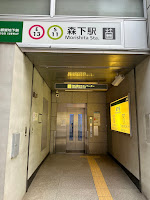
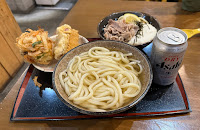



















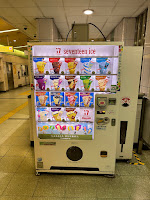











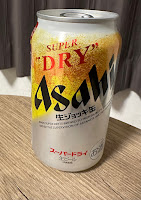

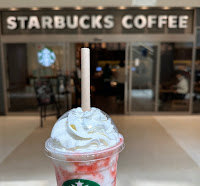

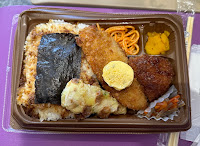
Comments
Post a Comment